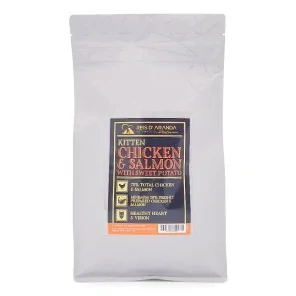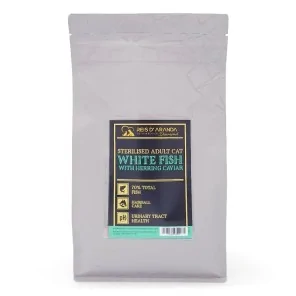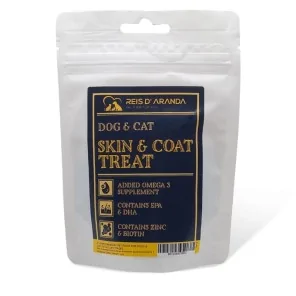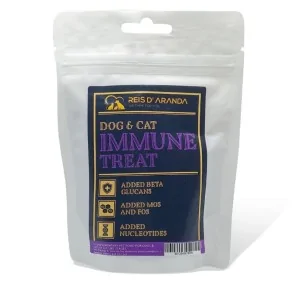Its name says it all: the Vienna blue rabbit comes from Austria. Not only is it beautiful with its shiny blue-grey...
THE ABYSSINIAN CAT
INTRODUCTION
The Abyssinian, also known as ‘Aby’, is not a quiet cat that sleeps all day. If you choose an Abyssinian, you will have a curious and very intelligent cat who loves to play and interact with his favourite humans.
THE ORIGIN OF THE ABYSSINIAN CAT
The origin of the breed name has nothing to do with the original place where the breed was developed, which is believed to be Egypt, but with the fact that the first ‘Abyssinian’ exhibited at a show in England was brought with the information that it had been imported from that country, Abyssinia (now Ethiopia). In the book ‘Cats, Their Points’, written by Gordon Staples and published in 1874, is the first mention of an Abyssinian. The book shows a drawing of a cat with a mottled coat and no stripes on the paws, face and neck. As described in the book, this cat called ‘Zulu’ was owned by Mrs. Barrett-Lennard and had arrived in England in 1868 with a military expedition from Abyssinia.2 Due to little substantiation in written reports this theory is little accepted among English breeders, who prefer to lean towards the view that the breed was actually created from crosses of various silvers and browns tabbies with the native English ticked cats known as ‘British Bunny’.
By the end of the 19th century the breed was already known and by the beginning of the 20th century catalogued. It was the English who started the systematic breeding of Abyssinians and initially worked on refining the breed. In 1909 the first Abyssinian arrived in the United States imported from England, and thus began the breeding of the breed in North America, which would take time to bear fruit. By the late 1930's Abyssinians of excellent quality were imported from England, which founded most of today's American breeding programmes.
Today all the cat associations of the world recognise this breed and its four traditional colours (Ruddy, Sorrel, Blue, and Fawn), and some also in other less accepted colours. Nowadays Abyssinians3 are one of the most popular breeds in the world in terms of birth registrations and cannot be missed at shows where excellent quality specimens can be admired.
WHAT IS THE ABYSSINIAN CAT LIKE?
HEAD: The TICA score for the head of these cats (Abyssinian and Somali, hereinafter AB/SO) is 35 points, made up as follows: 10 points for head frame, 5 points for ears, 5 points for eye shape, 5 points for eye colour, 5 points for puzzle and 5 points for profile. The desired standards are given below.6
SHAPE: From the front (the frame) should be almost triangular in shape without being exaggerated, as it should have a firm chin and rounded contours. The profile is almost perfectly elliptical in shape, with a small protuberance at the front, which forms the horn and which is technically called the ‘nose’; the curve of the forehead goes upwards, then projects behind the ears and then descends, with the rear angle of the chin and then ascends the front of the face coinciding with the cheek bone of the animal. The muzzle, which protrudes from this ellipse, is formed by a smooth bridge which ends in a rounded nose and the chin, which is placed behind the perpendicular line slightly following the ellipse formed by the head. This shape gives the cat 10 points for the TICA standard.
EARS: Broad based, with rounded ends, where there is usually a small tuft, as in the lynx, which curves from the inner axis outwards from the head; they are set well forward in the alert position, with the exception of the tuft referred to. The coat is very short, preferably white in colour, in accordance with typical colour requirements; when viewed in profile it is deep; the lower part of the ears are set on the upper line of the eyes, in the first third of the head. This shape gives the cat 5 points for the TICA standard.
EYES: almond-shaped; long, bright and expressive, surrounded by a black line; above the eyes, a short dark line appears, breaking the light area which goes from the nose to what would be the eyebrow; at the sides of each eye a dark line appears as if it were the continuation of the upper eyelid; the colour of the eye can be golden, green, copper or hazel and it is sought to be as deep and rich as possible; there is no relation between the colour of the eye and that of the coat. Both the shape and the colour of the eye give the cat 5 points each according to the TICA standards.
NECK: Should flow smoothly according to the head, when viewed from the front and from the side... The Muzzle gives the cat 5 points for the TICA standard.
PROFILE: There should be no flat contours and curved areas between the forehead, the nose and the muzzle should be shown. The profile gives the cat 5 points for the TICA standard.
BODY: The TICA score for the body of group AB/SO is 35 points, made up as follows: 10 points for the torso, 10 for the legs and paws, 5 for the tail, 5 for the bone structure and 5 for the musculature. The desired standards are given below.
TORSO: Should be of medium length; light and agile, showing well developed muscular strength, without masses of any kind and sound to the touch; the ribcage should be rounded with no evidence of flat sides; the rear flank should be moderately arched giving the appearance that the animal is about to spring. Proportion and balance are more desirable than extreme length. 10 points for this standard, according to TICA.
LEGS: Should be proportionate, long and well muscled, so that the AB/SO Cat stands well off the ground.
HANDS AND FEET: Oval and compact; when standing, should give the impression of walking on tiptoe. Legs and feet together give the cat a total of 10 points for TICA standards.
TAIL: Should be long and bushy. 5 points for this standard, according to TICA.
MUSCULATURE: Muscular strength well developed; no appearance of extraneous masses or balls of fat accumulation; should feel solid and firm to the touch. This standard gives 5 points, according to TICA, for this characteristic.
COAT / COLOUR / PATTERN: The TICA score for these characteristics in the AB/SO group is 30 points, made up as follows: 10 points for texture, 10 for pattern or ticking and 10 for colour. The desired standards are presented below.
LENGTH (AB): In the Abyssinian breed, the coat should be soft to the touch with a lustrous sheen, fine in texture; of sufficient length to accommodate four to six bands of colour, alternating dark and light; the coat should lie smoothly close to the body; a frizzy coat is not desirable; it should be longest over the spine and gradually shortening towards the flanks, legs and head.
PATTERN: The coat pattern is a genetic characteristic known as ticking, with dark colours interspersed with light coloured bands, which give a translucent effect. This characteristic gives 10 points for the TICA standard.
COLOUR: For this characteristic, there are two TICA divisions for the AB/SO group: Tabby and Silver/Smoke; Abyssinian and Somali cats in the Tabby division have warm colours, giving the impression of a very colourful cat. The overall strength and depth of colour is preferred, with very dark shades; darker shades over the spine are also desirable; white or very light shades should be found only on the abdomen of the animal, around the lips, on the front of the throat and towards the chest. In the Silver division only the undercoat colour should be different from the Tabby division, with the six ticking colours of both divisions; in all Silver varieties the undercoat colour should be snow white with a ticking appropriate to the particular colour giving a brilliant silver effect. The traditional bands of the Tabby division (Orange-Brown-Sorrel-Cream), are replaced by white, starting the lighter colour closer to the skin; yellow or brown pigmentations on the chest, belly or under the tail are not desirable; patches of light colours are considered as faults, being more serious in the Silver division. This standard gives the cat 10 points for this characteristic, in the TICA standard.
GENERAL CONDITIONS: The general impression of the Abyssinian/Somali group is of a medium sized cat with a slender appearance. The males are larger than the females, which have a finer bone structure and are usually more active than the males. The AB/SO group shows a highly developed, firm and lean muscular structure, showing a particular interest in strange noises. The Abyssinian/Somali cat is synonymous with health and vigour, well balanced physically, with a gentle temperament and easy to handle.
FAULTS:
COLOUR FAULTS: Cold, greyish colours, sandy shades; marked colours of tan, chocolate or grey shades; marked colour bars on or inside the legs, on the body or on the spine; coat too short or excessively long; wrong colour or colour pattern.
TICKING AND PATTERN FAULTS: Absence of hair with ticking on the body, bands or markings on the head and tail.
FAULTS IN CONDITION: Excess body fat, loss of lustre of coat, strange eye colour, loss of muscle tone, evidence of disease, are faults which reduce points.
DISQUALIFICATIONS (WW): Reverse Ticking (hair with the lighter colour on the fur fur fur furthest from the root of the hair); in the Tabby division, white colours or patches of white colours on the body in areas not permitted.
ABYSSINIAN CAT HEALTH
Abyssinians may develop an inherited disease called pyruvate kinase deficiency (PKD), which affects the metabolising capacity of red blood cells and can cause anaemia. An eye problem called progressive retinal atrophy (PRA), which can cause progressive blindness, has also been seen in Abyssinians. In addition, they can suffer from patellar luxation, when the kneecap is dislocated or displaced from its normal position; or hip dysplasia, when the hip joints do not form correctly, which can cause joint degeneration and painful osteoarthritis.
Always choose a responsible breeder and ask if the cat has been tested and vaccinated.
To prevent gingivitis and periodontal disease we have to offer them quality snacks and food that help to take care of their teeth, a good example of quality cat food is Reis d'Aranda's salmon kitten food and white fish with caviar for adult cats.
THE PERSONALITY OF THE ABYSSINIAN CAT
The Abyssinian cat is very active, and the females even more so. The Abyssinian cat hates solitude, and although it needs time to rest and do its activities, it always tries to be in the same room as its masters, and if they do not pay attention to it, in any activity, the cat will push its arm with its head, asking to be pampered.
He loves to wander all over the house and is always alert to noises and movement, he is a perfect breed for agility competitions, in which he participates with great success all over the world. He loves to jump and climb, so it is advisable to keep his claws short as he often tries to climb on people's shoulders or up furniture.
The Abyssinian is very intelligent, so it can be easily trained, following the method of treats and firm commands with a particular cue. It can sit, shake hands, shoulder up, stand, climb up and down furniture, among others. This breed loves a challenge and training is just another game for him, an opportunity to bond. However, he can be reserved and keep his distance from visitors.
CONCLUSION
In many respects, this breed cannot be compared to other breeds. His behaviour is more like that of a dog. It is intelligent, athletic, very sociable, and can play amusing pranks. For example, Abyssinians are often called ‘Aby-grabbys’, from grab, because of their ability to grab whatever catches their attention. These cats are also known for their ability to quickly ‘train’ their owners to do things for them, either by placing a favourite toy in front of him or by tapping his hand to get him to listen
Leave a comment
Log in to post comments
















